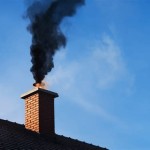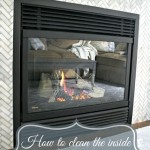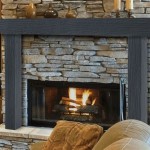Best Wood to Burn In A Fireplace
Fireplaces are a beloved feature in many homes, providing warmth, ambiance, and a focal point for gatherings. Choosing the right wood to burn in your fireplace is crucial for maximizing its benefits and ensuring a safe and enjoyable experience. Different wood species have varying characteristics that influence their burning qualities, such as heat output, flame duration, and smoke production. This article will explore some of the best wood choices for fireplaces.
Hardwoods for a Hot Fire
Hardwoods are generally considered the best wood for fireplaces due to their high density and low moisture content. They burn hotter and longer than softwoods, producing a more intense flame and greater heat output. Hardwoods also tend to produce less smoke and creosote, which can contribute to chimney fires. Here are some excellent hardwood options:
Oak
Oak is a popular choice for firewood, known for its high heat output and long burn time. It produces a bright, crackling flame and a pleasant aroma. The dense grain of oak makes it a good choice for slow-burning fires and those who want a long-lasting heat source.
Maple
Similar to oak, maple wood is another excellent choice for a hot and long-lasting fire. It burns with a clean, bright flame and emits a sweet, maple-syrup-like fragrance. Maple wood is also relatively easy to split and stack.
Hickory
Hickory is a highly prized hardwood that produces the hottest and longest-burning flames. It is known for its intense heat output and strong, smoky aroma. Hickory wood is a good choice for those who want a powerful fire and don't mind a stronger scent.
Ash
Ash wood is a solid option for fireplaces, offering a good balance of heat output and burn time. It burns with a bright, steady flame and produces less smoke than some other hardwoods. Ash wood is also relatively easy to find and is often available at affordable prices.
Softwoods for a Quick Fire
Softwoods are lighter and less dense than hardwoods, resulting in a faster burn and less heat output. While they may not be ideal for long-term heat, they offer advantages for specific situations. Softwoods are often preferred for starting fires, as they ignite more easily than hardwoods. They also produce a less intense flame, which can be beneficial when burning in small fireplaces or during milder weather.
Pine
Pine is a readily available softwood that is commonly used for starting fires. It ignites easily and burns with a bright, cheerful flame. Pine produces a resinous smell, which some find pleasant, while others may find it overpowering. Pine wood is also relatively inexpensive and easy to find.
Spruce
Spruce is another softwood that ignites easily and burns quickly. It produces a moderate amount of heat and a pleasant, piney aroma. Spruce wood is also known for its straight grain and is sometimes used for decorative purposes.
Cedar
Cedar is a softwood that burns with a fragrant, aromatic flame. It is often used for starting fires and produces a pleasant, earthy scent. Cedar wood is also known for its natural insect-repellent properties.
Considerations for Choosing Firewood
When selecting wood for your fireplace, several factors should be considered:
Moisture Content
The moisture content of wood directly affects its burning qualities. Wood that is too wet will burn inefficiently and produce excessive smoke. Ideally, firewood should have a moisture content of 20% or less. Seasoned wood, which has been dried for at least six months, generally meets this requirement.
Wood Size
The size of the wood pieces is also important. Smaller pieces tend to ignite faster and burn hotter than larger pieces. Consider the size of your fireplace and the type of fire you desire when choosing wood size.
Wood Source
It is essential to purchase firewood from reputable suppliers who source their wood responsibly. Avoid using wood that has been treated with chemicals or paints, as these substances can release harmful fumes when burned.
Fireplace Type
The type of fireplace you have can influence the best wood choice. For example, larger fireplaces can handle larger and denser wood pieces, while smaller fireplaces may benefit from smaller, faster-burning wood.
By following these guidelines and considering your specific needs, you can select the best wood for your fireplace, ensuring a warm, enjoyable, and safe experience. A well-chosen wood for your fireplace not only provides practical benefits but also enhances the overall experience of gathering around the hearth. Remember to prioritize safety by always using a fireplace screen and following fire safety guidelines.

What S The Best Wood To Burn For My Fireplace Capitol Chimney

The Best And Worst Types Of Wood For Burning In Fireplace Bob Vila

What Is The Best Wood To Burn In Your Fireplace Does It Matter

Best And Worst Woods For Fireplaces

Which Wood Dean Forge

Best Wood To Burn 5 Effective Guides Follow

What Is The Best Wood For Fireplace Comfort All Winter Long

The Best Firewood To Burn Chart Advice Charnwood

The Best Wood Fireplaces Of 2024 Direct Learning Center

How To Build A Long Lasting Fire Fiveways Fires Stoves
Related Posts








